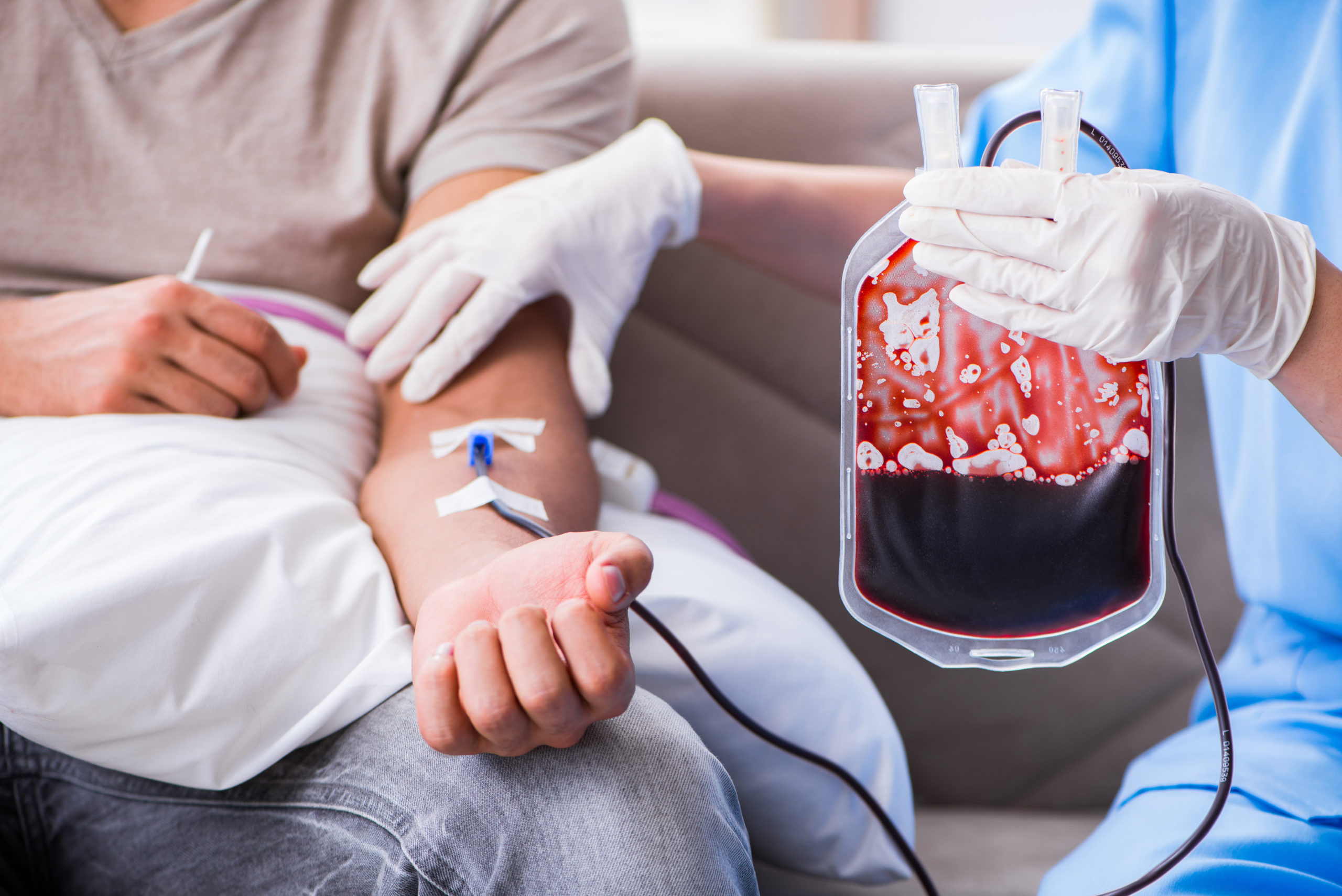Blood transfusion is the medical term for when a patient requires extra blood to sustain his or her body system. Using an intravenous line, blood or vital blood components such as red blood cells, white blood cells, or platelets can be transfused directly into a patient’s veins.When a person is bleeding profusely due to an injury, blood loss during surgery, or a serious illness, they usually need more blood.
Table of Contents
The Process of Blood Transfusion:
Many people donate blood daily to patients who are in desperate need of it. This donated blood must be carefully preserved at a precise temperature in specially made bags.
When a doctor orders a blood transfusion, the patient receives blood from a needle inserted into their veins. The blood or blood substance containing the bag is attached to another end of this channel. The blood then slowly moves from the bag to the patient’s circulatory system.
Why Do I Need a Blood Transfusion?
A blood transfusion may be needed for a variety of reasons.
Surgical procedure: During major surgery, a significant amount of blood is lost,which must be replaced immediately with the aid of a blood transfusion.
Anemia: When a patient has acute anemia, the number of red blood cells in their body falls far below normal levels. As a result, the only option to save their lives is to inject a large number of new red blood cells into their bodies.
Cancer: Patients with leukemia or other blood cancers are more likely to have serious anemia. Furthermore, chemotherapy and radiation harm the bone marrow, reducing its ability to produce red blood cells. As a result, prompt blood transfusions might be able to save the lives of these cancer patients.
Internal hemorrhage: A digestive tract injury sustained by an ulcer or other severe digestive disorders may result in a lot of bleeding. As a result, the patient can require a blood transfusion at times. Injuries caused by Accidents: When an individual is seriously wounded in an accident, a lot of blood leaks from the ruptured blood vessels. As a result, that individual may need a blood transfusion to compensate for the significant blood
loss.
Serious Illness: Anemia is commonly caused by blood disorders such as sickle cell disease and hemophilia, which cause consistent blood loss. As a result, a blood transfusion may be needed to save these patients’ lives.
Blood Transfusions Come in various Forms
Red blood cell transfusion: It is the most common form of blood transfusion, as people with anemia or other disorders only need red blood cell replacement.
Hemoglobin, which gives blood its red color and is required for oxygen transport, is found in red blood cells. To maintain normal hemoglobin levels, all patients undergoing surgery need red blood cell transfusions.
Platelet transfusion: Platelets are vital to blood components that aid in the clotting of blood and the prevention of excessive bleeding. Platelet transfusion is most often used to treat cancer whose platelet count has fallen below the normal range.
Plasma transfusion: Protein is found in the plasma, or liquid portion of blood, which aids in blood clotting. Plasma is normally isolated from all blood cells and preserved in a frozen state for up to a year, resulting in cryoprecipitate.
Plasmapheresis is a plasma donation process in which only plasma is removed from the blood and the leftover blood components are transferred to the donor.
Blood Transfusion’s Advantages:
When your red blood cell count is returned to normal by blood transfusion, you can be assured that your cells will receive enough oxygen. A healthy heart is also dependent on a sufficient supply of red blood cells.
Platelet transfusion can avoid excessive bleeding and a regular platelet count is needed to prevent excessive bleeding from a wound. When blood fails to clot spontaneously, cryoprecipitate plasma transfusion can help avoid bleeding.
Associated Risks in the Blood Transfusion Process:
After the blood transfusion, several patients develop a fever that can last up to 5 hours. When the body temp is high, they can also feel chest pain, apprehension, and nausea.
Even if the blood group matches, some people might be sensitive to the transfused blood. As a result, they can experience itching and hives on their bodies as a result of allergic reactions that occur either during or shortly after the transfusion process. If the body refuses to tolerate the freshly transfused blood, acute immune hemolytic reactions may occur. The patient will then experience a variety of symptoms, including fever, back pain, shivers, nausea, and darkened urine before the medicine is administered.
Delayed hemolytic reactions may appear months or years after the transfusion is completed. It has signs that are almost identical to those of an acute immune hemolytic reaction.
The patient may be contaminated with AIDS, Hepatitis B, Hepatitis C, or other bacterial contaminations if the blood is not thoroughly checked before transfusion.
The Zika virus and West Nile virus can be spread by transfused blood, but these cases are rare.
An anaphylactic reaction can occur right after a blood transfusion, and it can be fatal for a patient. It may cause swelling in the face, a throat infection, breathing problems, and a sharp drop in blood pressure.










